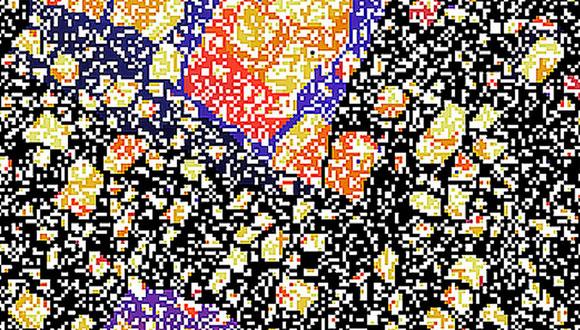Special BioSoft-Life Sciences seminar
Prof. Ben Fabry, FAU, Germany & Prof. Sebastian Streichan, UCSB, USA
10:15 - Prof. Ben Fabry, FAU, Germany:
“Cell traction force measurements in 3-D collagen matrices” Adherent cells exert tractions on their surrounding matrix. These tractions can be measured by solving the inverse problem that describes the relationship between observed matrix displacements and cell tractions. For cells cultured on a flat surface of a linear matrix materials (such as poly-acrylamide), the inverse problem can be analytically solved. For the case where cells are embedded in a 3-D matrix, the tractions must be recovered by numerical approaches. I will present how this can be done for a fibrous biopolymer matrix such as a collagen network with a highly non-linear stress-strain relationship and locally non-affine deformations. I will also present some of our previous work on traction force measurements of cancer cells, and our recent work on traction forces of immune cells that migrate at high speed through a collagen matrix.
11:05 - Prof. Sebastian Streichan, UCSB, USA:
“Physics of Living Matter: From Molecules to Embryo” Developmental biology established principles of how the body plan is laid out, morphogens setup axes, and gene expression patterns determine cell fates. Although we know organ architecture is often composed of laminar tissue, how shape is determined remains elusive. We know little of how tissues are remodeled, and less about how layers coordinate to form organs. Yet, shape is important to function of the body. How are behaviors of multiple cell types coordinated across layers to build complex organs? For a truly predictive framework of organ shape, molecular investigation must be extended by model driven quantitative analysis of tissue dynamics at the organismal level. At the organ scale, physical interactions and concepts from the physics of collective phenomena become relevant to study how multiple cell types streamline their behavior to generate reproducible tissue flows. We develop methods for quantitative studies across scales of morphodynamics. These tools go hand in hand with physics inspired models that yield testable, quantitative predictions of how genes hijack physical phenomena to shape organs. I will discuss three examples of how tissue dynamics leads to shape shifting. (I) in toto live imaging of body axis elongation in D. melanogaster combined with optogenetic perturbation of contractility and quantitative analysis uncovers dynamic recruitment of myosin in a strain rate dependent mechanism. (II) Quantitative analysis of visceral organogenesis reveals how hox gene patterning in the mesoderm layer triggers a dynamic molecular mechanism to control physical process in the adjacent endoderm layer. (III) A chip-based culture system enables self-organization of micro patterned stem cells into precise three-dimensional cell-fate patterns and form. This system recreates aspects of neural tube folding, and analysis indicates that apical constriction of neural ectoderm together with basal adhesion mediated via extracellular matrix synthesis by non-neural ectoderm drive folding.


